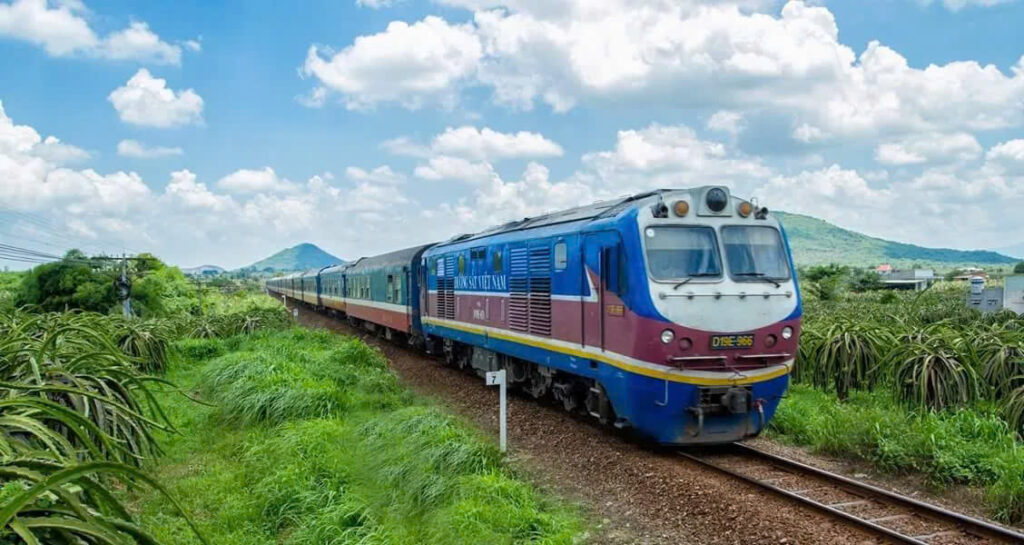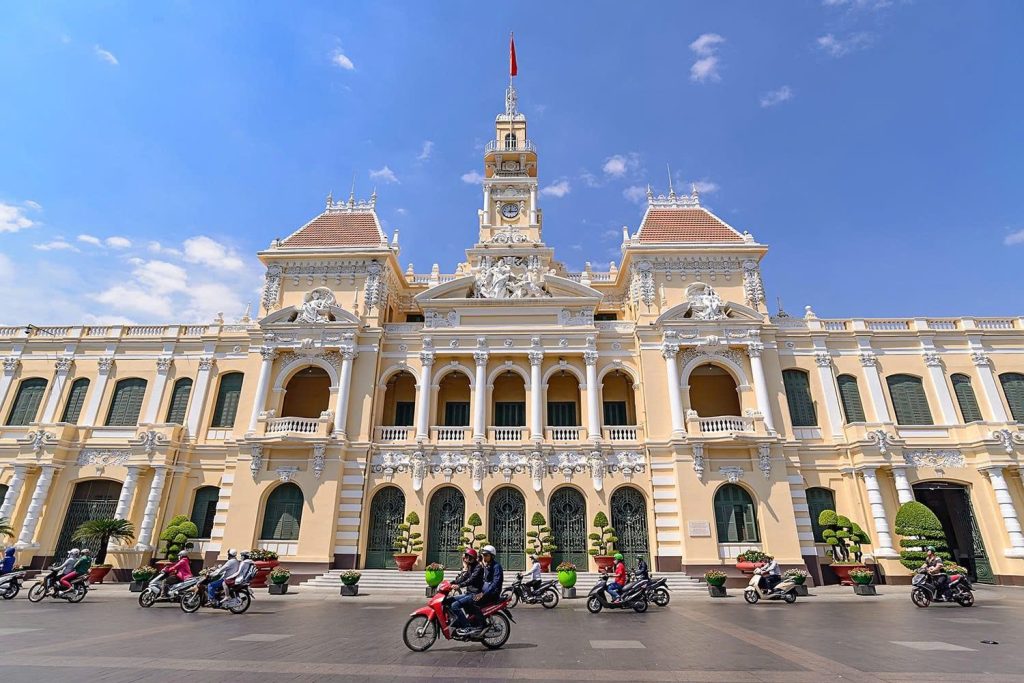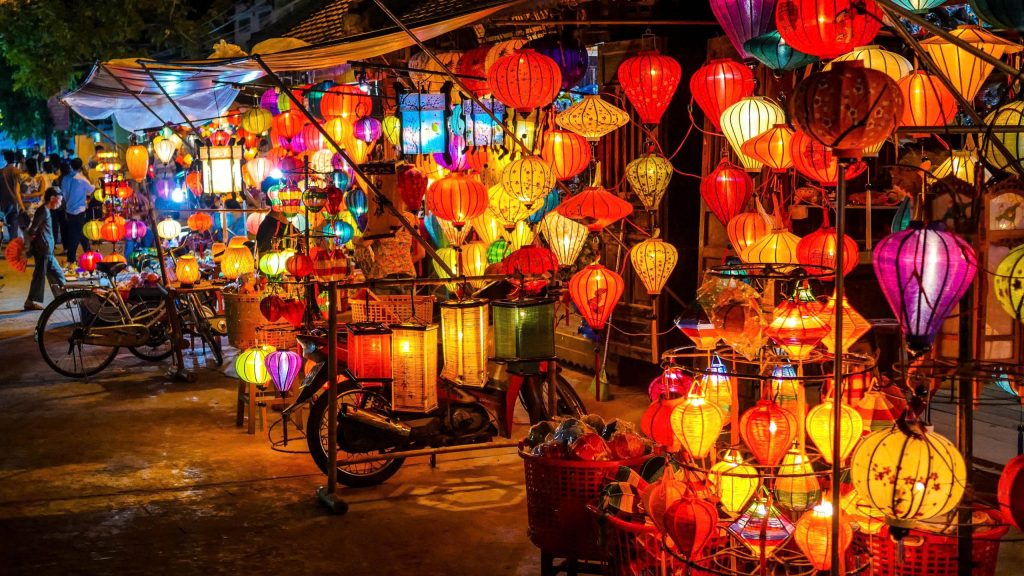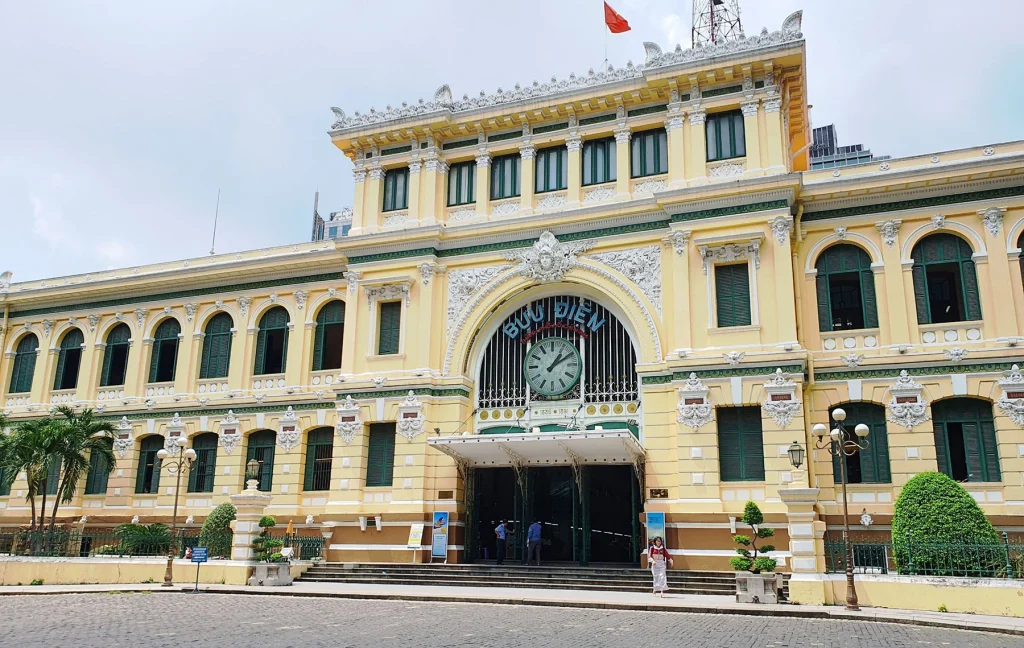Traveling the length of Vietnam from the historic capital of Hanoi in the north to the bustling metropolis of Ho Chi Minh City (formerly Saigon) in the south is an iconic journey. While flights and buses are options, the train offers a unique and immersive experience, allowing you to soak in the diverse landscapes and charming towns. This guide provides everything you need to know to plan your train travel from Hanoi to Ho Chi Minh City.
Why Shou You Choose the Train for Your North-South Vietnam Journey?
Opting for the Vietnam Railways for this long-distance travel comes with several advantages:
- Scenic Views: The North-South Railway (officially known as the Reunification Express- Tau Thong Nhat) winds through picturesque countryside, coastal plains, and mountain passes, offering breathtaking vistas you won’t see from a plane.
- Comfort and Space: Compared to buses, trains generally offer more legroom and the option to stand up and walk around. Sleeper trains provide comfortable berths for overnight travel, allowing you to arrive rested.
- Cultural Immersion: You’ll share the journey with locals, offering a glimpse into Vietnamese daily life. The stops at various stations provide opportunities to observe local culture.
- Cost-Effective: While the fastest option might be flying, train travel can be a more budget-friendly choice, especially if you opt for seating options over a private cabin.
- Environmental Considerations: Train travel generally has a lower carbon footprint compared to air travel.
Planning Your Train Trip: Essential Steps
1. Understanding the Train Options:

- The Reunification Express: This is the primary train line connecting Hanoi and Ho Chi Minh City. Several train numbers operate on this route (e.g., SE1, SE3, SE5 heading south, and SE2, SE4, SE6 heading north), each with slightly different schedules and stopping patterns.
- Train Types: You’ll encounter various train types, often categorized as fast trains (SE) and slow trains (TN). Fast trains make fewer stops and have shorter travel times.
- Seating and Berth Classes:
- Hard Seat: The most economical option, can be less comfortable for long journeys.
- Soft Seat: Padded seats offering more comfort.
- Hard Berth (6-berth cabin): Bunk beds in a shared cabin.
- Soft Berth (4-berth cabin): More comfortable bunk beds with more space. Some trains offer VIP cabins with 2 berths.
2. Checking the Train Schedule:
- The train schedule can vary depending on the day and time of year. It’s crucial to check the latest timetable on the Vietnam Railways website or through reputable booking platforms.
- Consider the duration of the journey, which typically ranges from 30 to 40 hours, depending on the train type and route. Overnight trains are common for this route.
3. Booking Your Train Tickets:

- Official Vietnam Railways Website: This is a reliable source for booking tickets directly. You can book from goverment website here: Tổng công ty đường sắt Việt Nam – Bán vé tàu trực tuyến
- Local Train Stations: You can purchase tickets in person at Hanoi Railway Station and Saigon Railway Station. However, booking in advance is highly recommended, especially during peak seasons and holidays like Tet (Lunar New Year).
- Reputable Online Travel Agencies: Several agencies specialize in booking train tickets in Vietnam and can offer convenience and support in English.
- Advance Booking: Booking several weeks or even months in advance is advisable to secure your preferred travel dates and seat/berth class.
4. Preparing for Your Journey:
- Pack Essentials: Comfortable clothing, toiletries, any necessary medications, entertainment (books, music), and snacks.
- Food and Drinks: While some trains have dining cars or vendors selling basic food and drinks, it’s a good idea to bring your own supplies, especially for longer journeys or if you have dietary restrictions.
- Currency: Have some Vietnamese Dong (VND) in cash for small purchases on the train or at stations.
- Identification: Carry your passport and visa (if required).
- Power Bank: Outlets may be limited or unreliable on some trains.
The Train Journey Experience: What to Expect

- Boarding: Make sure to be at Hanoi Railway Station at least 30-45 minutes before the train leaves so you have enough time to board.
- Onboard Amenities: Amenities vary depending on the train type and class. Generally, you can expect basic toilets and sometimes a shared washbasin. Higher-class cabins may have more comfortable bedding and individual reading lights.
- Food Service: Some trains have a dining car serving Vietnamese dishes. You might also encounter vendors walking through the carriages selling snacks and drinks.
- Scenery: Be sure to keep your eyes peeled for the stunning landscapes unfolding outside your window. The journey showcases Vietnam’s diverse geography.
- Stops: The train will make several stops at various stations along the North-South Railway line, allowing passengers to disembark and new passengers to board. These stops can offer a glimpse into local life in different regions.
- Overnight Travel: If you opt for a sleeper train, make the most of your berth to get a good night’s rest. Bedding is usually provided.
Notable Stops Along the Way
While the train makes numerous stops, some key destinations along the Hanoi to Ho Chi Minh City railway that you might consider for a break or future travel include:

- Hue: The former imperial capital, renowned for its Citadel, royal tombs, and delicious cuisine.
- Da Nang: With its beautiful beaches, the notable Dragon Bridge, and the remarkable Ba Na Hills, Da Nang is a lively city on the coast.
- Nha Trang: A popular beach resort city with islands, diving spots, and historical sites like the Po Nagar Cham Towers.
Comparing Train Travel to Other Options
- Flights: The fastest option but can be more expensive, and you miss out on the overland scenery. Air travel between these two cities involves departing from Hanoi’s Noi Bai International Airport (HAN) and arriving at Ho Chi Minh City’s Tan Son Nhat International Airport (SGN).
- Buses: A more budget-friendly alternative, but the journey is often longer and less comfortable than the train, especially for such a long distance.
Tips for a Smooth Train Journey
- Book in Advance: Especially during peak season.
- Bring Entertainment: Books, music, movies to pass the time.
- Pack Snacks and Drinks: Don’t rely solely on onboard options.
- Carry Wet Wipes and Hand Sanitizer: For hygiene.
- Be Prepared for Delays: Train schedules can sometimes be subject to delays.
- Secure Your Belongings: Be mindful of your valuables.
RELATED: How to Get Around Vietnam by Train: Your Ultimate Guide
Taking the train from Hanoi to Ho Chi Minh City offers an experience beyond simple travel; it’s a journey of discovery. It offers a unique perspective on Vietnam’s beauty and culture, allowing you to experience the country at a slower pace. With careful planning and preparation, your rail journey along the North-South Railway will be a memorable and rewarding experience.

















